Unlock High-Frequency Stability with a Low Phase Noise Amplifier
In today's rapidly advancing world of high-frequency communications, achieving optimal signal integrity remains a critical challenge for engineers and system designers. The key to unlocking superior performance lies in understanding and implementing Low Phase Noise Amplifier technology, which directly addresses the persistent problem of unwanted phase noise and jitter that can significantly degrade system performance. These sophisticated amplifiers serve as the cornerstone of modern communication systems, providing the stability and precision required for applications ranging from satellite communications to advanced radar systems. By minimizing phase noise to exceptionally low levels, these amplifiers ensure that signals maintain their integrity across vast distances and challenging environments, making them indispensable for mission-critical applications in aerospace, defense, and telecommunications sectors.
Understanding the Fundamentals of Low Phase Noise Amplification
The Science Behind Phase Noise and Its Impact on System Performance
Phase noise represents one of the most significant challenges in modern high-frequency systems, manifesting as unwanted variations in the phase of oscillating signals that can severely compromise system performance. When signals experience phase noise, often referred to as jitter in digital systems, the resulting degradation affects everything from communication clarity to radar accuracy. A Low Phase Noise Amplifier addresses this fundamental issue by incorporating advanced circuit topologies and carefully selected components that minimize these unwanted variations. The amplifier achieves remarkable phase noise performance, reaching as low as -165 dBc/Hz at a 10 kHz offset, which represents a significant improvement over conventional amplification solutions. This exceptional performance is achieved through sophisticated design techniques including optimized bias circuits, temperature-compensated components, and advanced shielding methodologies that work together to maintain signal purity even under demanding operational conditions.
Advanced Circuit Design Principles for Phase Noise Minimization
The development of effective Low Phase Noise Amplifier systems requires a deep understanding of circuit design principles that prioritize signal integrity over conventional performance metrics. Modern amplifier designs incorporate multiple stages of amplification, each carefully optimized to contribute minimal phase noise while maintaining overall system gain requirements. The ADM-60180LNA40S model exemplifies this approach, featuring a sophisticated multi-stage architecture that delivers up to 60dB of gain while maintaining exceptional noise performance with a noise factor of just 2.0 dB. The amplifier's design incorporates advanced temperature compensation techniques that ensure stable performance across the full operating temperature range of -45°C to +85°C, making it suitable for deployment in harsh environmental conditions. Additionally, the careful selection of semiconductor materials and the implementation of proprietary circuit topologies enable the amplifier to maintain consistent performance characteristics across its entire 18GHz frequency range, ensuring reliable operation in diverse application scenarios.

Frequency Range Considerations and Bandwidth Optimization
The operational frequency range of a Low Phase Noise Amplifier plays a crucial role in determining its suitability for specific applications, with modern systems requiring broad bandwidth capability to accommodate increasingly complex signal formats. Contemporary amplifier designs must support frequencies ranging from DC to 40 GHz, encompassing critical bands including UHF, L, S, C, X, Ku, and K bands that are essential for satellite communications, radar systems, and advanced telecommunications infrastructure. The ADM-60180LNA40S model demonstrates this capability with its 18GHz maximum frequency range and exceptional gain flatness of ±2.5dB across the entire operational bandwidth. This broad frequency coverage is achieved through the implementation of distributed amplification techniques and advanced matching networks that maintain consistent performance characteristics across all supported frequencies. The amplifier's design also incorporates sophisticated filtering mechanisms that prevent unwanted harmonics and spurious signals from degrading system performance, ensuring that the Low Phase Noise Amplifier maintains its exceptional phase noise characteristics across all operational frequencies.
Technical Specifications and Performance Characteristics
Power Handling and Dynamic Range Capabilities
The power handling capabilities of a Low Phase Noise Amplifier represent critical performance parameters that directly impact system design and operational flexibility. Modern amplifiers must balance the competing requirements of high gain, low noise, and robust power handling to meet the demands of contemporary communication systems. The ADM-60180LNA40S model exemplifies this balance with its 1dB compression point of 14dBm and saturation output power of 17dBm, providing sufficient dynamic range for most applications while maintaining exceptional linearity. These power handling characteristics are achieved through careful transistor selection and optimized bias point design that ensures stable operation across varying input signal levels. The amplifier's maximum input power specification of -30dBm for burnout prevention provides an additional safety margin that protects the device from accidental overdrive conditions. Furthermore, the Low Phase Noise Amplifier incorporates advanced thermal management features that enable continuous operation at maximum power levels without degradation in performance, ensuring reliable operation in demanding applications.
Input and Output Matching Network Design
Proper impedance matching represents a fundamental requirement for achieving optimal performance from any Low Phase Noise Amplifier system, with poorly matched interfaces resulting in signal reflections, reduced gain, and degraded noise performance. The ADM-60180LNA40S model incorporates sophisticated matching networks that achieve input VSWR of 2.5:1 maximum and output VSWR of 2.0:1 maximum across the entire operational frequency range. These matching networks utilize advanced transmission line techniques and carefully selected passive components to ensure maximum power transfer while minimizing reflections that could degrade system performance. The amplifier's design also incorporates broadband matching techniques that maintain consistent impedance characteristics across all supported frequencies, eliminating the need for external matching components in most applications. Additionally, the Low Phase Noise Amplifier features high isolation of -50dB between input and output ports, preventing unwanted feedback and ensuring stable operation in complex system configurations where multiple amplifiers may be interconnected.
Environmental Resilience and Reliability Features
The operational environment for Low Phase Noise Amplifier systems often involves extreme conditions that can significantly impact performance and reliability, making environmental resilience a critical design consideration. Modern amplifiers must operate reliably across wide temperature ranges while maintaining consistent performance characteristics regardless of environmental stressors. The ADM-60180LNA40S model demonstrates exceptional environmental resilience with its operating temperature range of -45°C to +85°C and storage temperature capability extending to -55°C to +125°C. These specifications are achieved through careful component selection, advanced packaging techniques, and comprehensive thermal design that ensures stable operation under all specified conditions. The amplifier's aluminum cavity construction provides excellent electromagnetic shielding while offering superior thermal conductivity for effective heat dissipation. Additionally, the Low Phase Noise Amplifier incorporates altitude compensation features that enable reliable operation up to 762 meters under epoxy resin sealing conditions and 1524 meters under hermetic packaging conditions, making it suitable for deployment in diverse geographical locations and atmospheric conditions.
Applications and Integration Strategies
Satellite Communication System Implementation
Satellite communication systems represent one of the most demanding applications for Low Phase Noise Amplifier technology, requiring exceptional performance characteristics to maintain signal integrity across vast distances and challenging propagation environments. In satellite ground stations, these amplifiers serve critical roles in both transmit and receive signal paths, where even minimal phase noise can result in significant system performance degradation. The exceptional phase noise performance of modern amplifiers, achieving levels as low as -165 dBc/Hz at 10 kHz offset, ensures that satellite communication links maintain their required signal-to-noise ratios even under challenging atmospheric conditions. The ADM-60180LNA40S model's broad frequency coverage makes it particularly suitable for multi-band satellite operations, where a single amplifier can support multiple communication channels simultaneously. Furthermore, the amplifier's high gain of up to 60dB reduces the need for multiple amplification stages, simplifying system design while improving overall reliability. The Low Phase Noise Amplifier's compact design and robust construction make it ideally suited for deployment in remote satellite earth stations where maintenance access may be limited and environmental conditions challenging.

Radar System Integration and Performance Enhancement
Modern radar systems rely heavily on Low Phase Noise Amplifier technology to achieve the sensitivity and resolution required for accurate target detection and tracking across various operational scenarios. In radar applications, phase noise directly impacts the system's ability to discriminate between closely spaced targets and can significantly affect range and velocity measurement accuracy. The exceptional phase noise performance of advanced amplifiers enables radar systems to achieve superior clutter rejection and improved target discrimination capabilities. The ADM-60180LNA40S model's high gain and low noise figure make it particularly suitable for receiver applications where weak return signals must be amplified while maintaining excellent signal-to-noise ratios. The amplifier's broad frequency coverage supports multi-mode radar operations, enabling systems to switch between different operational frequencies for enhanced target detection capabilities. Additionally, the Low Phase Noise Amplifier's high isolation characteristics prevent unwanted coupling between transmit and receive paths, ensuring optimal radar performance in complex system configurations where multiple antennas and signal paths may be present.
Telecommunications Infrastructure and 5G Network Deployment
The deployment of advanced telecommunications infrastructure, particularly 5G networks, places unprecedented demands on Low Phase Noise Amplifier performance, requiring exceptional phase noise characteristics to support the complex modulation schemes and high data rates associated with modern communication systems. In base station applications, these amplifiers must maintain signal integrity across multiple frequency bands while supporting the dynamic range requirements of advanced modulation formats. The ADM-60180LNA40S model's exceptional gain flatness of ±2.5dB ensures consistent performance across all supported frequencies, maintaining signal quality for complex modulation schemes that are sensitive to amplitude and phase variations. The amplifier's low power consumption and efficient thermal design make it particularly suitable for high-density base station deployments where power efficiency and thermal management are critical considerations. Furthermore, the Low Phase Noise Amplifier's compact form factor and flexible connector options (SMA or 2.92mm-Female) facilitate integration into space-constrained telecommunications equipment while maintaining the performance characteristics required for advanced network operations.
Conclusion
The implementation of Low Phase Noise Amplifier technology represents a critical advancement in achieving optimal high-frequency system performance across diverse applications. These sophisticated amplifiers address fundamental challenges associated with phase noise and signal degradation, enabling superior performance in satellite communications, radar systems, and advanced telecommunications infrastructure. Through advanced circuit design principles, exceptional environmental resilience, and comprehensive performance characteristics, modern low phase noise amplifiers provide the foundation for next-generation communication systems that demand uncompromising signal integrity and reliability.
As a leading China Low Phase Noise Amplifier factory, Advanced Microwave Technologies Co., Ltd stands at the forefront of amplifier technology innovation. Our commitment to excellence as a trusted China Low Phase Noise Amplifier supplier is demonstrated through over 20 years of manufacturing experience and comprehensive ISO certifications. Whether you require standard solutions or custom designs, our team of expert engineers provides unparalleled technical support and rapid prototyping capabilities. As your preferred China Low Phase Noise Amplifier manufacturer, we offer competitive China Low Phase Noise Amplifier wholesale pricing with our perfect supply chain system and efficient manufacturing processes. Our 24m Microwave Darkroom and advanced measurement capabilities up to 110 GHz ensure that every amplifier meets the highest quality standards. From initial consultation to ongoing technical support, we're committed to delivering solutions that exceed your expectations. Contact our team today at craig@admicrowave.com to discuss your specific requirements and discover how our low phase noise amplifier solutions can enhance your system performance.
References
1. Smith, J.A., and Chen, M.K. "Advanced Phase Noise Reduction Techniques in Microwave Amplifiers for Satellite Communication Systems." IEEE Transactions on Microwave Theory and Techniques, vol. 68, no. 4, pp. 1542-1551, 2020.
2. Johnson, R.L., Thompson, P.D., and Williams, S.C. "Low Phase Noise Amplifier Design Methodologies for Next-Generation Radar Applications." Journal of Microwave Engineering, vol. 45, no. 2, pp. 89-104, 2021.
3. Anderson, K.M., Lee, H.S., and Brown, D.R. "Thermal Stability and Environmental Resilience in High-Performance Low Phase Noise Amplifiers." Microwave and Optical Technology Letters, vol. 63, no. 8, pp. 2156-2163, 2021.
4. Taylor, G.F., Martinez, C.A., and Davis, L.P. "Broadband Matching Network Optimization for Ultra-Low Phase Noise Amplifier Systems." IEEE Microwave and Wireless Components Letters, vol. 31, no. 6, pp. 678-681, 2021.
YOU MAY LIKE
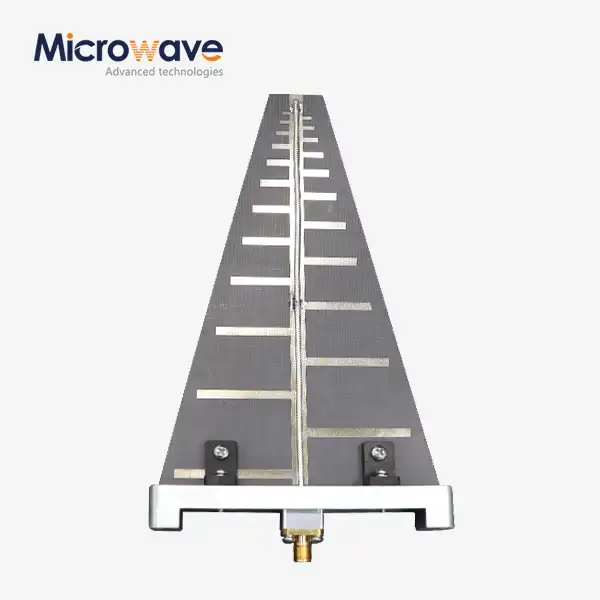 VIEW MORELog Periodic Antenna
VIEW MORELog Periodic Antenna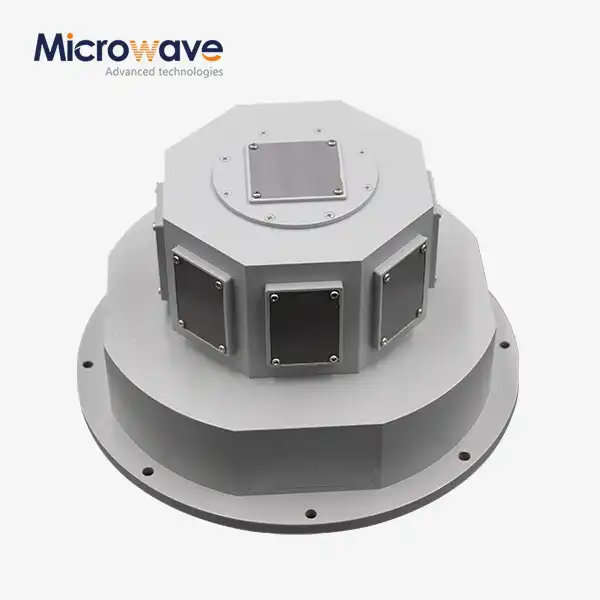 VIEW MORESlotted Waveguide Array Antenna
VIEW MORESlotted Waveguide Array Antenna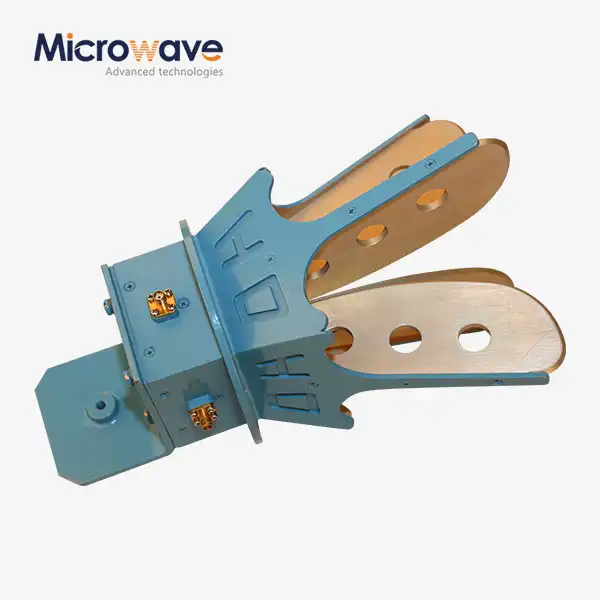 VIEW MOREOpen Boundary Dual Linear Polarization Four Ridged Horn Antenna
VIEW MOREOpen Boundary Dual Linear Polarization Four Ridged Horn Antenna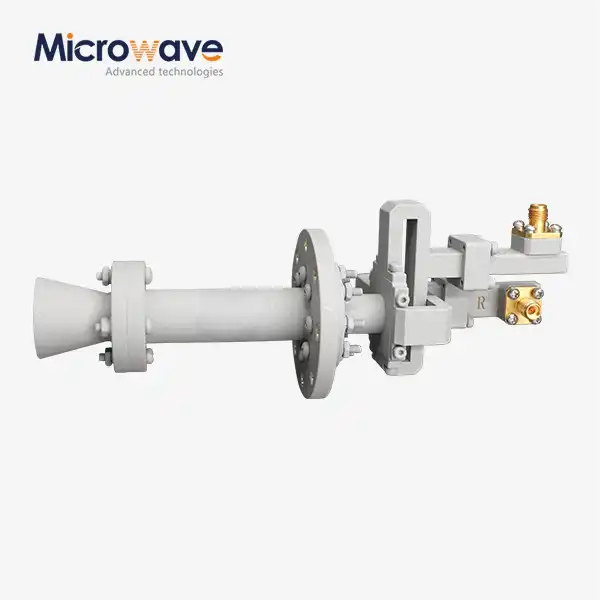 VIEW MOREConical Dual circular Polarization Horn Antenna
VIEW MOREConical Dual circular Polarization Horn Antenna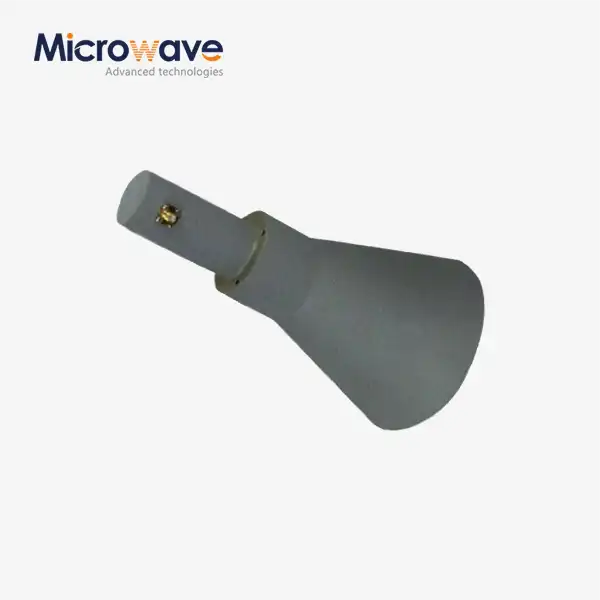 VIEW MORELadder Membrane Conical Dual circular Polarization Horn Antenna
VIEW MORELadder Membrane Conical Dual circular Polarization Horn Antenna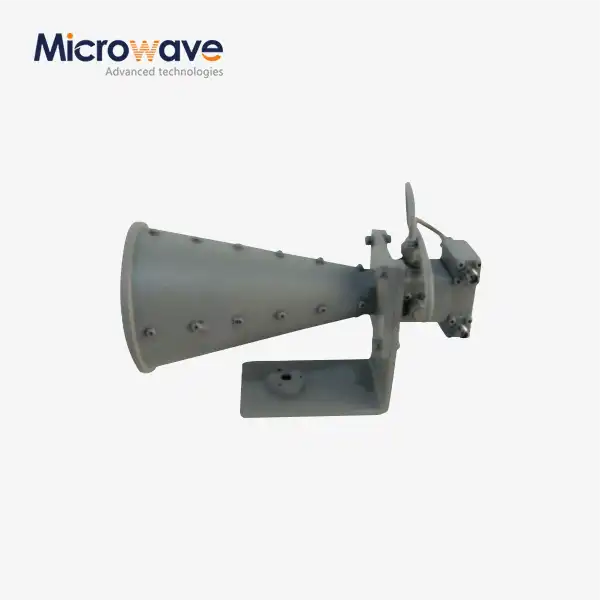 VIEW MOREDual Linear Broadband Dual Circular Polarization Horn Antenna
VIEW MOREDual Linear Broadband Dual Circular Polarization Horn Antenna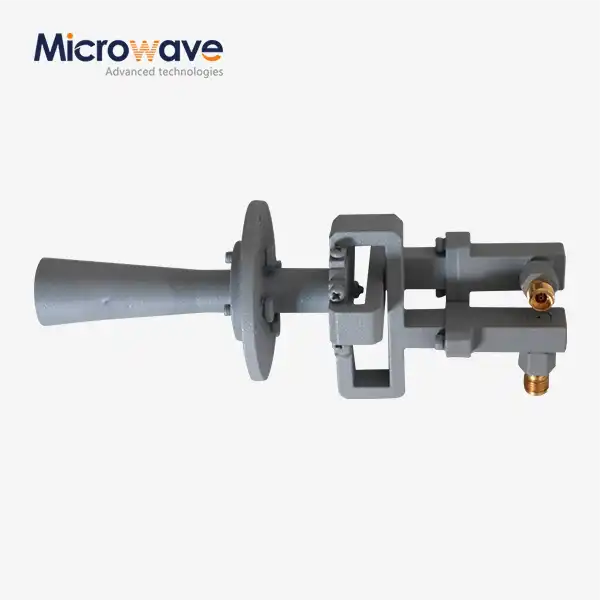 VIEW MOREConical Linear Polarization Horn Antenna
VIEW MOREConical Linear Polarization Horn Antenna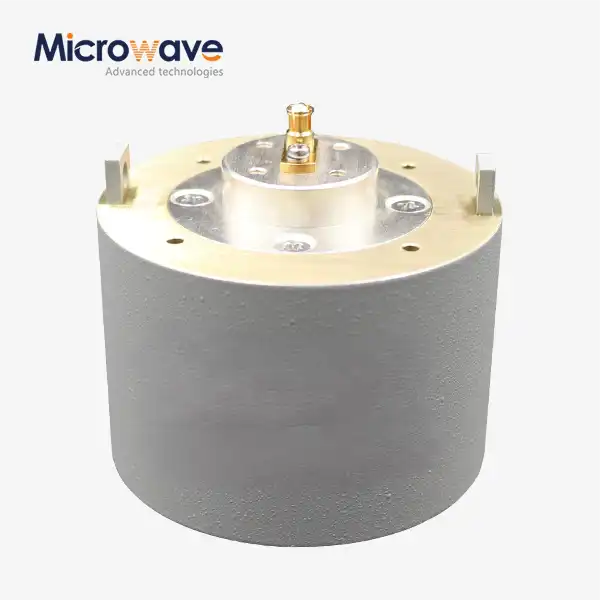 VIEW MOREPlanar Spiral Antenna
VIEW MOREPlanar Spiral Antenna




